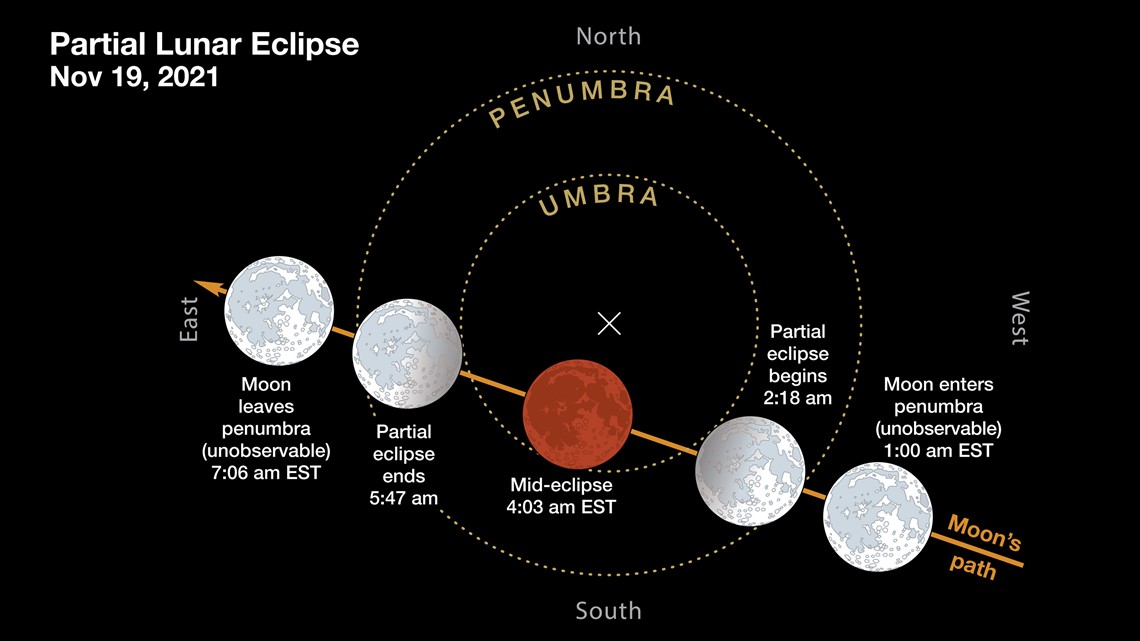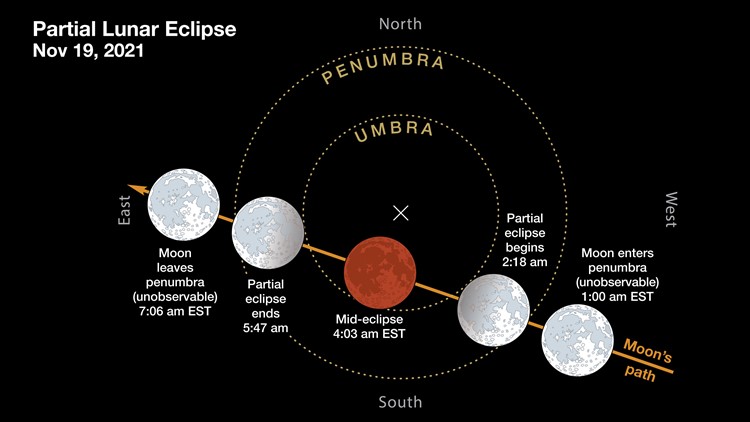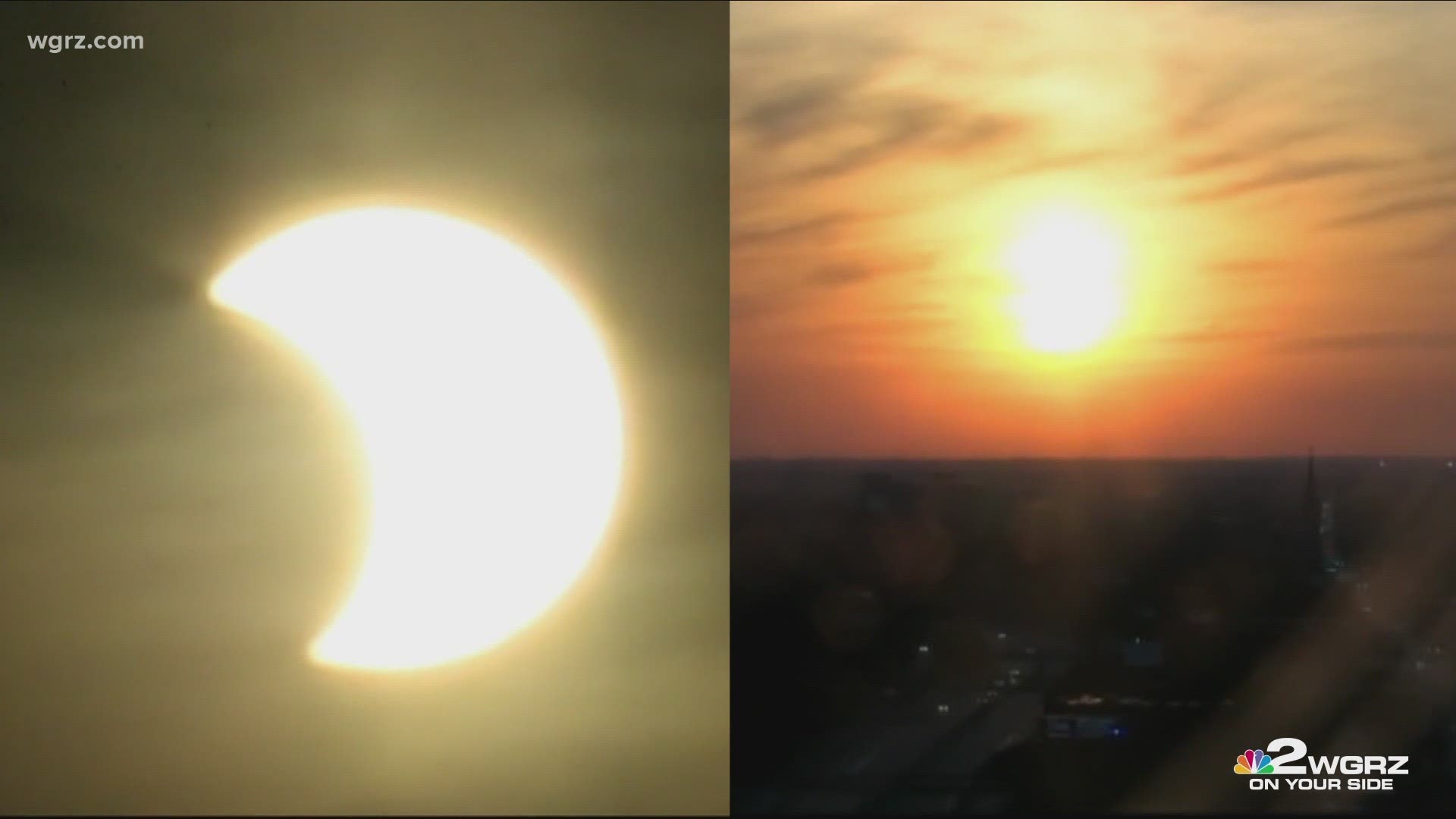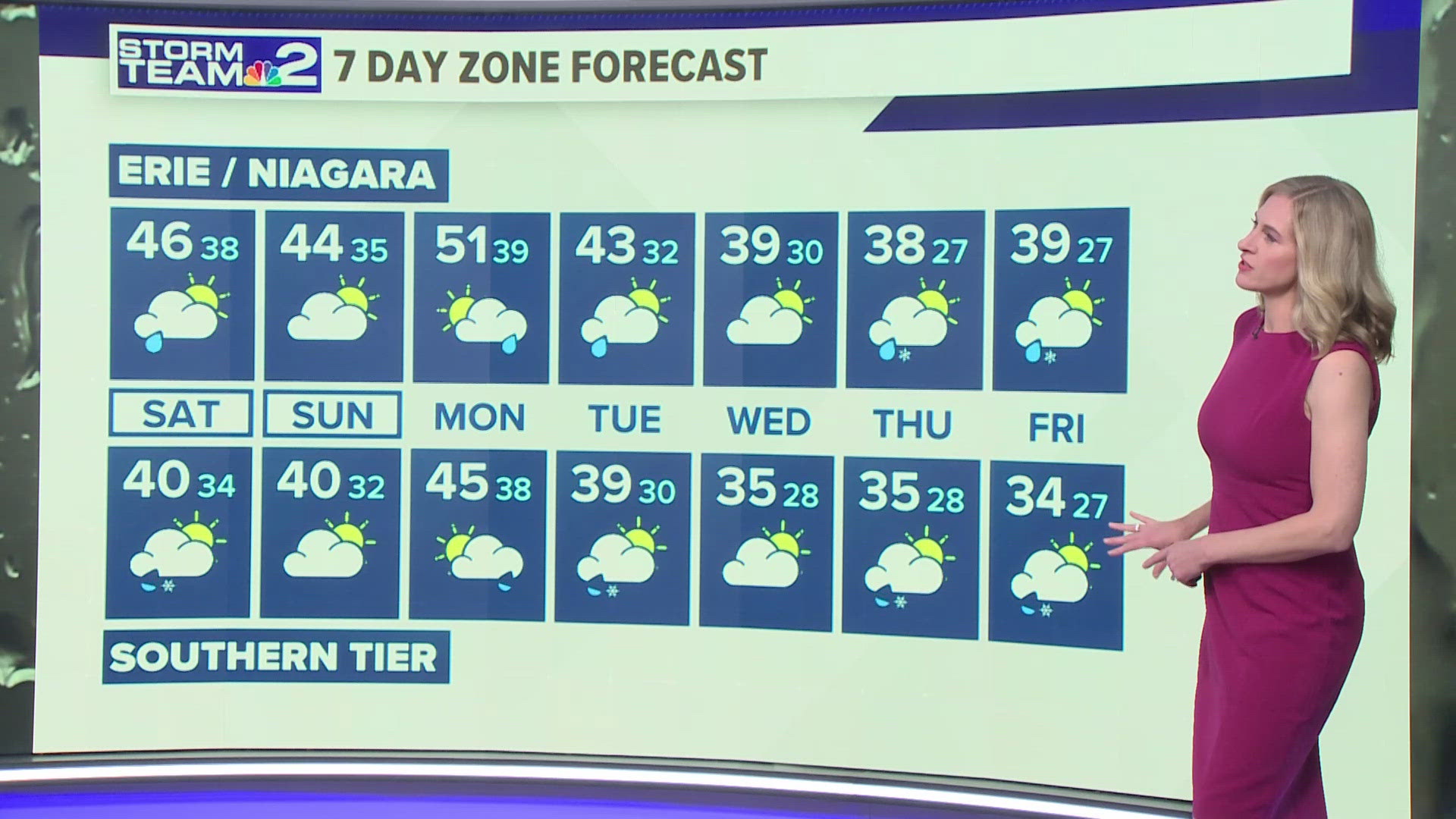BUFFALO, N.Y. — Get ready to either stay up late Thursday or set an early alarm Friday morning as this upcoming lunar event is one you won't want to miss!
November's full moon also coincides with a nearly complete lunar eclipse that will take place on Friday, November 19, 2021. And you could say it's a "two for one" lunar event with it being a full moon and partial lunar eclipse happening all at once. Here's what you need to know about this month's "Beaver Blood Moon."
Let's first mention key times and moments for the event. Here in Buffalo, the partial lunar eclipse in its entirety will last for just over 6 hours. Keep in mind to check the forecast Thursday though for any cloud cover could that could ruin this celestial event, which is a possibility at this point.
And while the entire eclipse will last for over 6 hours, the portion of the eclipse where the moon will have that red-ish hue will be shorter, beginning at 2:18 a.m. Friday morning and last until 5:47 a.m. The peak where almost the entire moon will be red is at 4:03 a.m. That's almost three and a half hours for a partial lunar eclipse, making it one of the longest visible in North America this century!


Now on to the definition of this "Beaver Blood Moon."
First is the full moon part. November's full moon is appropriately titled the "Beaver Moon" as it's the time of year when beavers would nestle in their homes to ride out the long winter ahead. But November's full moon can also be known as the Frost or Freezing Moon and Whitefish Moon. The tradition of naming full moons comes from early Native American, Colonial American, and European folklore.
Second, and inevitably the more unique part of this equation, the partial lunar eclipse! A lunar eclipse occurs when the Sun, Earth, and Moon are all in alignment with the Moon on the dark side of the Earth and the Sun on the opposing side (leaving the Earth in the middle). This way, the moon passes through the Earth's shadow on the darker side of the Earth when it's nighttime.
The reason why the moon becomes visible and is illuminated red in a lunar eclipse is because of a process called Raleigh Scattering. This is when different wavelengths, and therefore colors, of light, are reflected and refracted through the Earth's atmosphere. In the case of a lunar eclipse, the red light from sunlight is refracted away from the Earth and can be seen by the moon appearing red in the night sky.
Now, the reason why this is only a partial lunar eclipse is that a small sliver of the moon will be left out of alignment. But it's still a nearly 98% lunar eclipse! And in this case, it's also one of the longer lunar eclipses we'll be able to see across North America.



